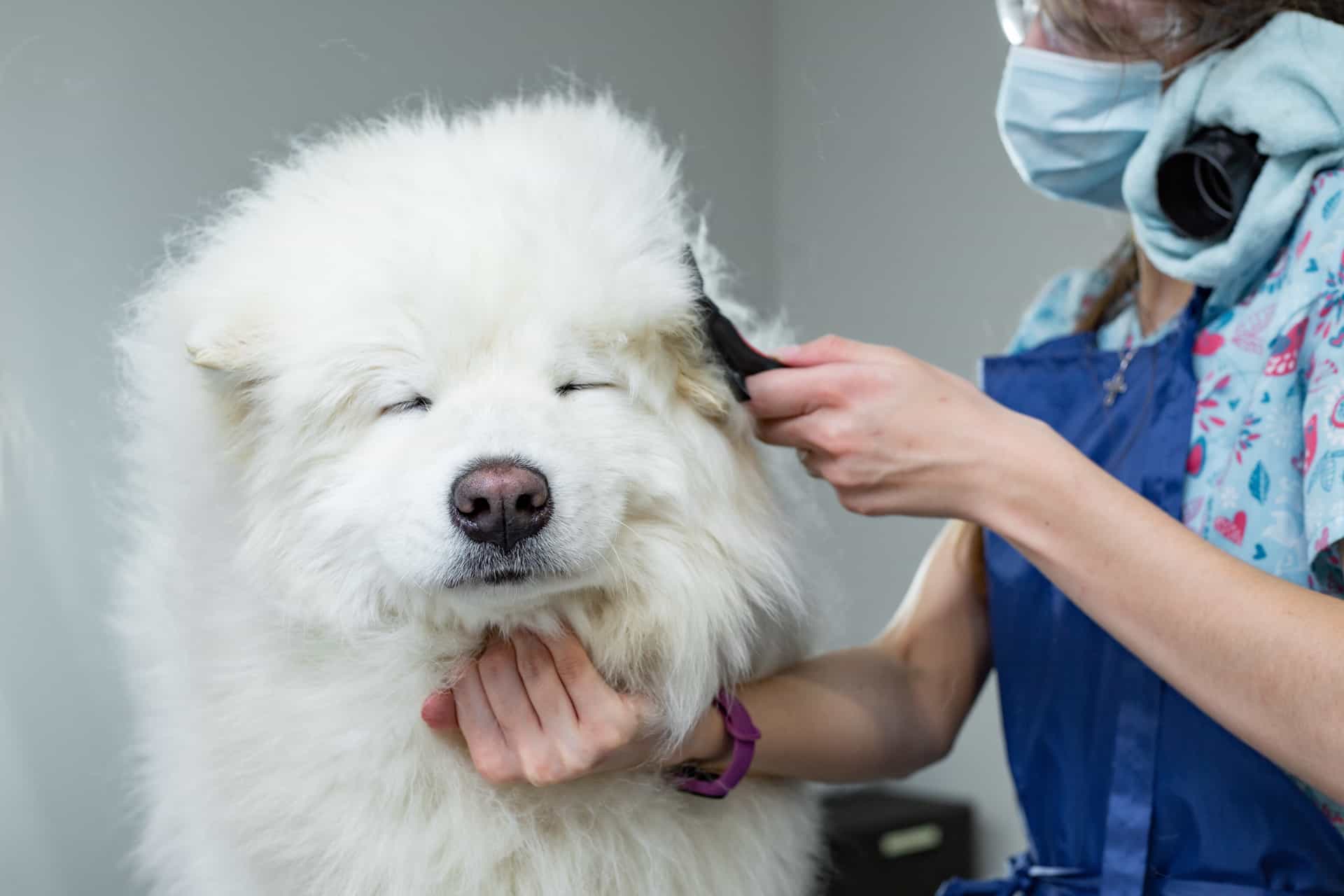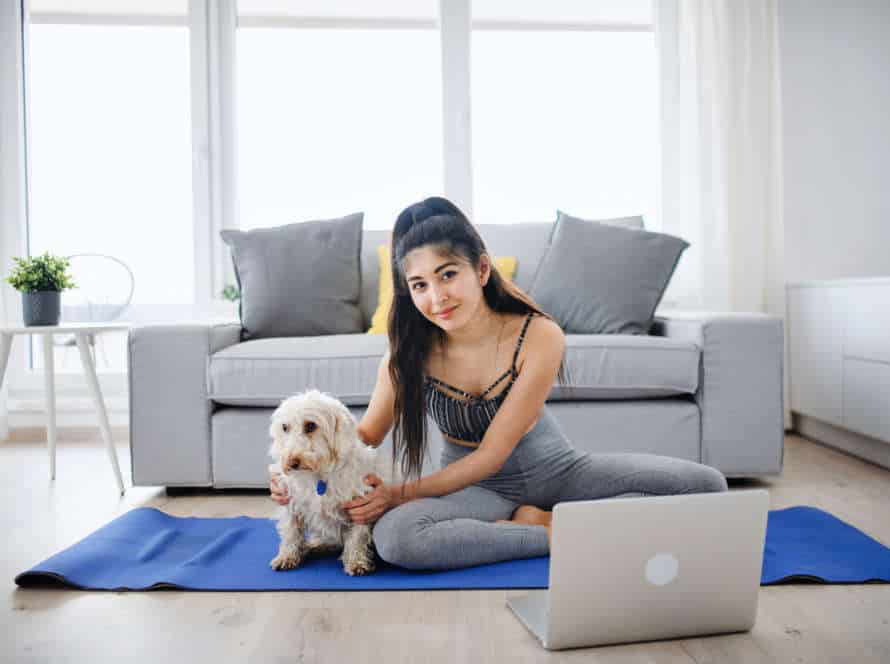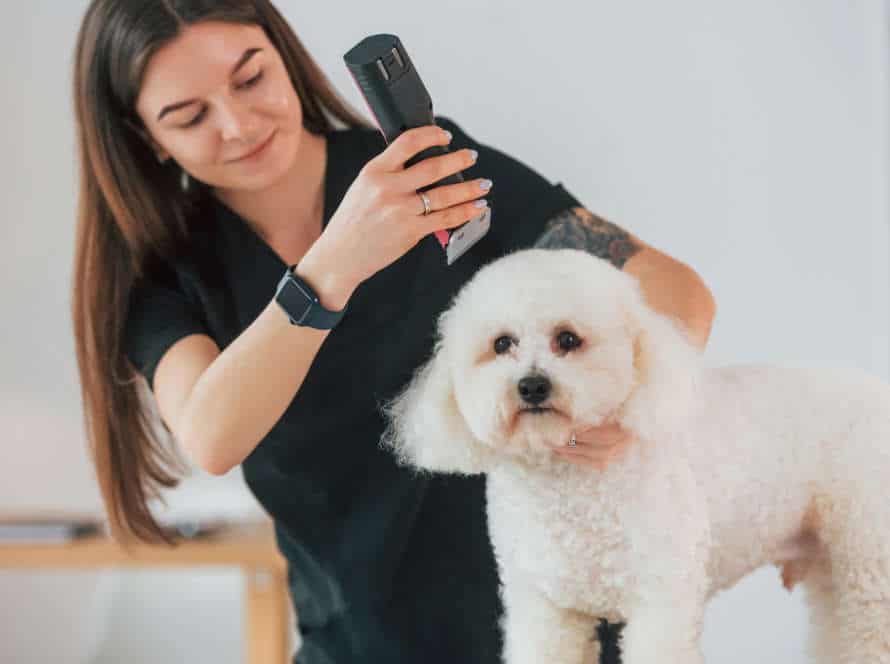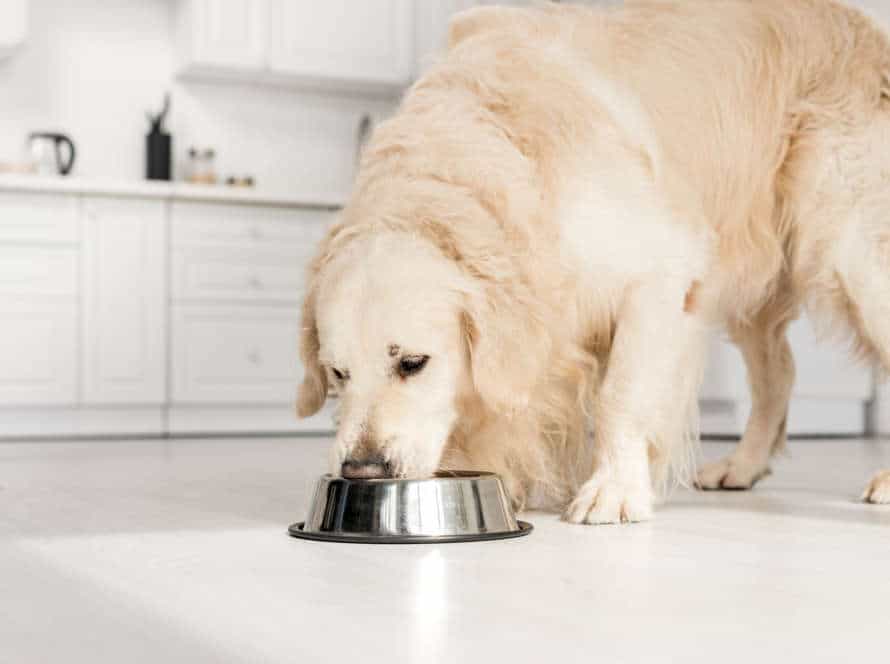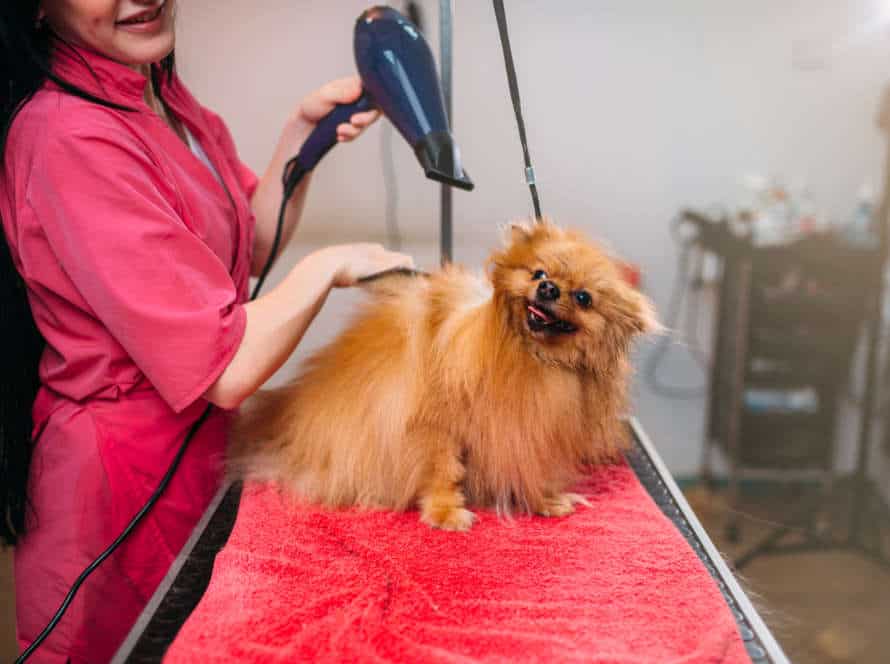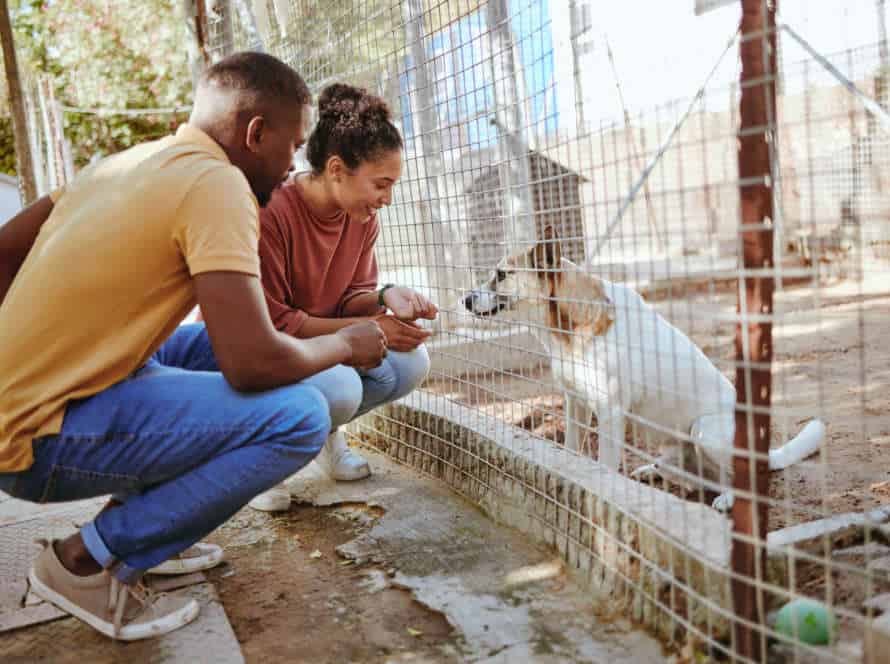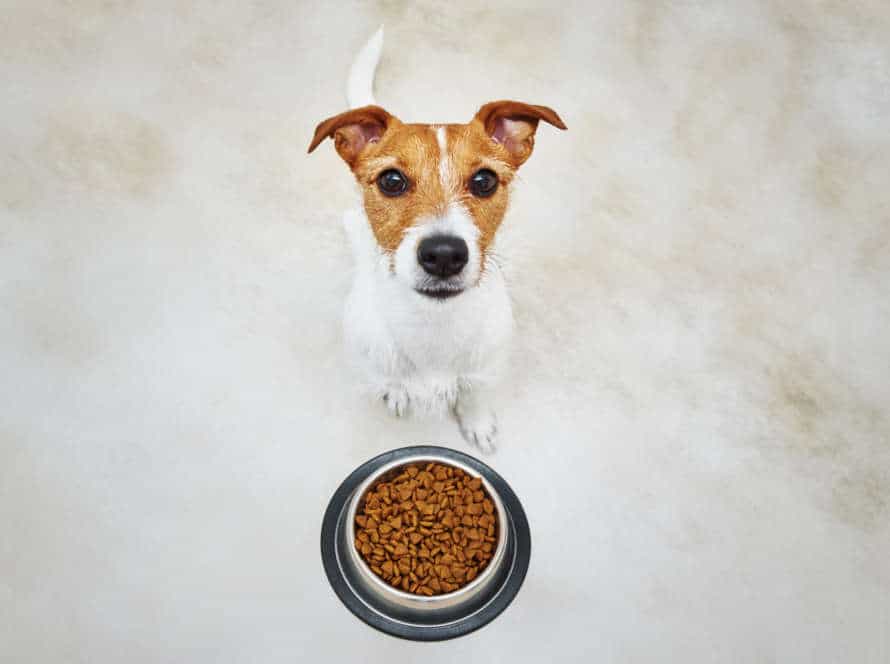Keep Your Adult Dog Looking Great: Grooming Routine Tips
For an adult dog to look their best, regular grooming is a must. This includes brushing, bathing, nail trimming and ear cleaning. Here are some tips:
- Brush your pup’s coat at least once a week. Use a slicker brush or shedding comb for best results.
- Bathing should be done every 6-8 weeks, using a gentle dog shampoo and conditioner. Rinse well to stop skin irritation.
- Nails should be trimmed every 4-6 weeks, using a sharp dog nail clipper. Be careful not to cut the quick – the sensitive pink area in the nail.
- Clean the ears every 2-4 weeks, using a dog-specific ear cleaner and cotton pads or balls. Wipe inside the ear flap and canal, don’t push wax deeper in.
Regular grooming not only makes them look great, but also keeps their coat and skin healthy.
Brushing Your Dog
Grooming your pup is essential for their well-being. An integral part of keeping them looking spiffy is brushing. It helps keep their coat healthy, but it offers other advantages too. Keep reading to learn more about the benefits of brushing grown-up dogs and how to do it right.
Understand the brushing needs of your dog’s coat type
Knowing your pup’s coat needs is key to keeping them looking great and healthy. Here’s the basics on brushing different coats:
- Short-haired coats: Brush weekly with a rubber glove or bristle brush.
- Long-haired coats: Brush daily with a slicker brush and detangler spray.
- Double coats: Huskies, Malamutes, Shepherds need frequent brushing with a slicker brush & steel comb.
- Curly coats: Poodles, Bichons, etc need daily brushing with a slicker brush & detangler spray.
Brushing not only helps your pup’s coat shine, it gives you bonding time. Pro Tip: Be patient and make it fun!
Tools You Need for Brushing Your Adult Dog: Slicker brush, Undercoat rake, Comb
Regularly brushing your adult dog is essential for keeping its fur looking great and healthy. You will need three tools for effective grooming: a slicker brush, an undercoat rake, and a comb. The slicker brush has fine, short wires close together and is ideal for long or curly fur. Be gentle to avoid irritating the skin. The undercoat rake has long, round-tipped teeth and is good for double coats. Be careful on sensitive areas like the belly and legs. The comb is crucial for removing tangles, mats, and spotting fleas and ticks. A metal comb works best for medium to long fur. To keep your dog looking great, brush the coat in the direction of hair growth.
How to Brush Your Adult Dog: The Routine Steps
Brushing your grown pup is a must, to help keep their fur healthy, glossy, and knot-free! Here are the steps you should take to brush an adult dog properly:
- Find the right brush for the type of coat your pup has.
- Begin by brushing the back, neck, and sides of your dog, going in the same direction as the fur grows.
- Move to the legs, tail, and tummy – be gentle around sensitive spots.
- Use a slicker brush to get rid of mats and tangles for long-haired pooches.
- End with a comb to untangle and remove any remaining loose hairs.
Grooming your dog on a regular basis can also help keep them clean and lessen shedding.
Pro tip: Make brushing a positive experience for your pup by giving treats and praising them throughout the process.
Bathing Your Adult Dog
It’s vital for your pup’s health, as well as its appearance, to keep an adult dog’s coat looking its best. To do this, you need to bathe it. This section explains how often to bathe your adult dog, what supplies you’ll need, and the best techniques. Bathing helps keep their coat clean, free from dirt, oils, and parasites.
When to Bathe Your Adult Dog
Bathing an adult dog is a key part of their grooming. Knowing when to bathe them is essential for keeping them looking great. Here are things to consider when deciding when to give your adult dog a bath:
- Coat and skin condition: Dogs with active lifestyles or thicker coats need more baths than those with less-active lifestyles or finer hair. Dogs with skin issues may require more baths.
- Body odor: If your pup has a bad smell, that’s a sign that it’s time for a bath.
- Outdoor activities: After swimming or rolling in the mud, a bath is a must.
Bathe your dog once every three months or as needed. But, don’t over-wash as this can dry out their skin and cause skin issues. Pro tip: Use dog-specific shampoo with the right pH balance to keep their skin safe.
Tools You Need for Bathing Your Adult Dog: Shampoo, Conditioner, Brush, Towels
Bathing your adult pup is a must for their grooming. And, having the right tools is key for a successful and enjoyable experience for you and your furry companion. Here’s what you need:
- Shampoo: Pick a pup-specific shampoo that has no harsh chemicals or fragrances that bother their skin. Make sure to moisten their fur entirely before using the shampoo.
- Conditioner: Get a pup-specific conditioner to help detangle the fur and keep it soft and glossy.
- Brush: Use a slicker brush to get rid of any tangles or mats before bathing. Brush your pup again after bathing to take away any loose fur and have healthy skin and coat.
- Towels: Have multiple clean towels ready to dry your doggo after their bath. Gently but thoroughly rub them to get rid of extra water and avoid skin irritation.
With these essentials, you can have your adult pup looking and feeling great with regular bathing and grooming.
How to Bathe Your Adult Dog: The Routine Steps
Groom your adult dog right by following these simple steps for a successful bath time!
- Brush their coat to remove loose hair & debris.
- Put a non-slip mat or towel in the bathtub/shower.
- Thoroughly wet the coat with warm water.
- Apply dog shampoo, lather from head to tail, avoiding eyes, ears & nose.
- Rinse off shampoo completely.
- Put on conditioner & let it sit for a few mins.
- Rinse off conditioner completely.
- Towel dry & use blow dryer on low heat.
Pro Tip: Use treats & positive reinforcement to make bath time a positive experience!
Trimming Your Dog’s Hair and Nails
Regularly trimming your dog’s hair and nails? ‘Tis part of a healthy routine for adult canines! It helps keep ’em healthy, clean, and looking their best. We’ll discuss the process and offer some tips and tricks. Hair and nails – get trimming!
When to Trim Your Dog’s Hair and Nails
Trimming your pup’s fur and nails is key to a healthy, groomed pooch. How often? That depends on several factors.
Hair Trimming: Depends on breed, coat type and hair thickness. Longer, thicker coats need more frequent trims. Generally, every 4-6 weeks.
Nail Trimming: To avoid overgrowth, splitting and injury, trim nails when they click on the floor. That’s too long! Every 3-4 weeks should do.
Begin grooming early to make it comfortable and reduce anxiety. Pro tip: Praise and treats after grooming make them associate it positively.
Tools You Need for Trimming Your Adult Dog: Dog clippers, Scissors, Nail clippers
Grooming your pup? You need dog clippers, scissors, and nail clippers! For clippers, get ones specially made for your pup’s fur type. Electric clippers are the most effective, with various blade sizes to match hair lengths. Start with a higher blade number and work your way down. Scissors are best for tricky spots like the face, ears, and paws. Blunt-tipped scissors are safer for beginners. And for nail clippers, there are two kinds: guillotine-style and scissor-style. Choose one you’re comfy using and make sure it’s the right size.
Before you start grooming, make sure your pup is chill and relaxed. Offer treats and positive reinforcement to make grooming a pleasant experience.
How to Trim Your Adult Dog’s Hair and Nails: The Routine Steps
Groom your adult dog by trimming its hair and nails. This is essential and routine to keep them looking and feeling great. Here’s what you need to do:
- Gather your tools – get some sharp, high-quality clippers that fit your pup’s breed. Get some nail trimmers and styptic powder too.
- Brush and comb their fur – make sure to remove knots and tangles before clipping.
- Clip their hair – use the clippers, scissors, and/or shears. Start at the neck, work towards the tail. Go slowly.
- Trim the nails – hold each paw and trim. Be careful not to cut the quick, or it’ll bleed.
- Check and clean ears, brush teeth, and reward with a treat for good behavior.
Pro Tip: If your pup seems uncomfortable or aggressive, consider asking a professional groomer or vet for help.
Cleaning Your Dog’s Teeth
Cleaning your doggy’s teeth is important for keeping a healthy pup and a stunning smile. No dental care may result in tartar build-up, gum disease and even tooth rot. Develop a routine of brushing Fido’s teeth regularly to avoid these issues and have a gorgeous adult pup. Let’s look closer at the cleaning process.
When to Clean Your Dog’s Teeth
It’s vital to clean your pup’s pearly whites as part of their grooming routine. Here’s how to know when it’s time:
- Bad breath? That’s halitosis – a sign of dental disease. Cleaning is necessary if your pup’s breath smells, even after proper oral hygiene.
- Teeth discoloration? Yellow or brown tartar buildup is present.
- Swollen gums? Check if they’re red, swollen, or bleeding – that means gingivitis or periodontal disease.
- Pawing at the mouth? If they’re in pain, they need a dental cleaning ASAP.
Remember: Routine dental check-ups, good nutrition, and at-home dental care can help prevent dental disease and save $$.
Tools You Need for Cleaning Your Dog’s Teeth: Dog toothpaste, Toothbrush, Dental Wipes
It’s key to have the right tools to look after your pup’s oral health. Three essentials:
- Dog toothpaste: Not human toothpaste! That contains ingredients bad for dogs. Choose toothpaste made just for them. It comes in yummy flavors.
- Toothbrush: Soft bristles, long handle – perfect for every part of their mouth. Some fit over your finger – super easy to use!
- Dental Wipes: A great option for quick cleaning and breath-freshening. Wrap them around your finger and rub on teeth and gums.
With these tools and regular care, you can help prevent dental disease and keep your pup happy and healthy!
How to Clean Your Adult Dog’s Teeth: The Routine Steps
Groom your adult pooch by cleaning its teeth! It’s easy with the right tools and technique. Here’s how:
- Let your pup sniff and lick the toothpaste, to get used to the process.
- Use a dog toothbrush or finger brush, and scrub their teeth and gums in a circular motion.
- Focus on outer surfaces of the teeth, which are more prone to plaque.
- Use pet-safe toothpaste, not human toothpaste – it can be toxic!
- Reward your dog with praise and treats after each clean.
Regular teeth cleaning keeps your pup’s oral health and hygiene in check. Plus, it prevents plaque and tartar buildup – which can lead to serious health issues later.
Dealing with Health and Safety Issues While Grooming
Adult dog grooming is essential! Whether at home or at a professional groomers, safety and health must be taken into account. What products should be used? Might injuries or health issues arise? Let us explore these topics further.
Common Health Concerns and Safety Issues in Adult Dog Grooming
Groom your adult pup? Be aware of health and safety matters that may come up! This knowledge can help keep your furry chum healthy and joyous during and after each grooming session.
Skin irritations, rashes, cuts, abrasions, ear infections, eye injuries, and allergic reactions…these are some common health and safety matters to stay alert for. To avoid them, make sure to clean your grooming tools often and use them only on clean fur. Clip nails and trim fur cautiously and search for any signs of discomfort or pain in your animal. Be gentle around delicate areas like eyes and ears when washing.
Keep these ideas in mind and your doggo will remain fit, cheerful, and look marvelous! Pro-tip: If you notice any irregular or consistent health issues, converse with your vet for extra assistance and care.
Precautions to Take When Grooming Your Adult Dog: Safety Tips
Grooming your adult pup is essential for keeping their hygiene and health in check. But, take precautions to keep your dog safe during the process. Here are some safety tips:
- Use the correct grooming tools and equipment suited for your dog’s breed, coat type and size.
- Make sure your dog is chilled and relaxed before starting the session. Use gentle and soothing tones to keep them calm.
- Avoid human grooming products on your dog’s skin and coat, as they can cause irritation and allergic reactions.
- Be cautious while clipping your pup’s nails, and avoid the quick or nerve endings in the nail bed.
- Watch for signs of discomfort, like whining, whimpering or pulling away. Stop the grooming right away if needed.
Keep in mind that grooming your dog at home can be a great bonding experience, but safety and wellbeing must take precedence.
Recognizing Health Issues During Grooming: Warning Signs to Look Out For
Grooming your pup is a fantastic way to create a bond. But, it’s essential to look out for health concerns that could emerge. Here are some signs to be aware of:
- Excessive scratching or biting? This could be fleas, ticks, or skin irritations.
- Red or swollen skin? This may mean an allergic reaction or skin infection.
- Lumps or bumps? These could be cysts or tumors that need vet care.
- Unusual odor? This could mean an infection or other issue.
- Behaviour changes? If your dog seems agitated, restless, or aggressive, they may be in pain.
It’s essential to be vigilant and address any warning signs quickly. This will keep your pet fit and content.
Frequently Asked Questions
Q: How often should I groom my adult dog?
A: It depends on the breed and coat type, but most dogs need to be groomed at least once a month. Some breeds with long hair may need to be groomed more frequently.
Q: What kind of brush should I use on my dog?
A: Again, it depends on the breed and coat type. A slicker brush is good for dogs with long, curly or wavy hair, while a bristle brush works well for short-haired dogs. Consult a professional groomer or veterinarian for specific recommendations.
Q: Can I cut my dog’s hair myself?
A: Unless you have experience with dog grooming, it’s probably best to leave it to a professional. Cutting a dog’s hair incorrectly can lead to painful matting, skin irritation and/or infections.
Q: How often should I bathe my dog?
A: Dogs typically need to be bathed every two to four months. However, if your dog gets dirty or smelly between baths, you can use a dry shampoo or wipe them down with a damp cloth.
Q: Should I trim my dog’s nails?
A: Yes, dogs’ nails need to be trimmed regularly to prevent them from getting too long and causing discomfort or pain. If you’re not comfortable doing it yourself, a groomer or veterinarian can do it for you.
Q: Are there any health benefits to regular grooming?
A: Yes! Regular grooming can improve your dog’s overall health by preventing skin irritations, detecting lumps or other abnormalities, and keeping their coat free of parasites like fleas and ticks.

